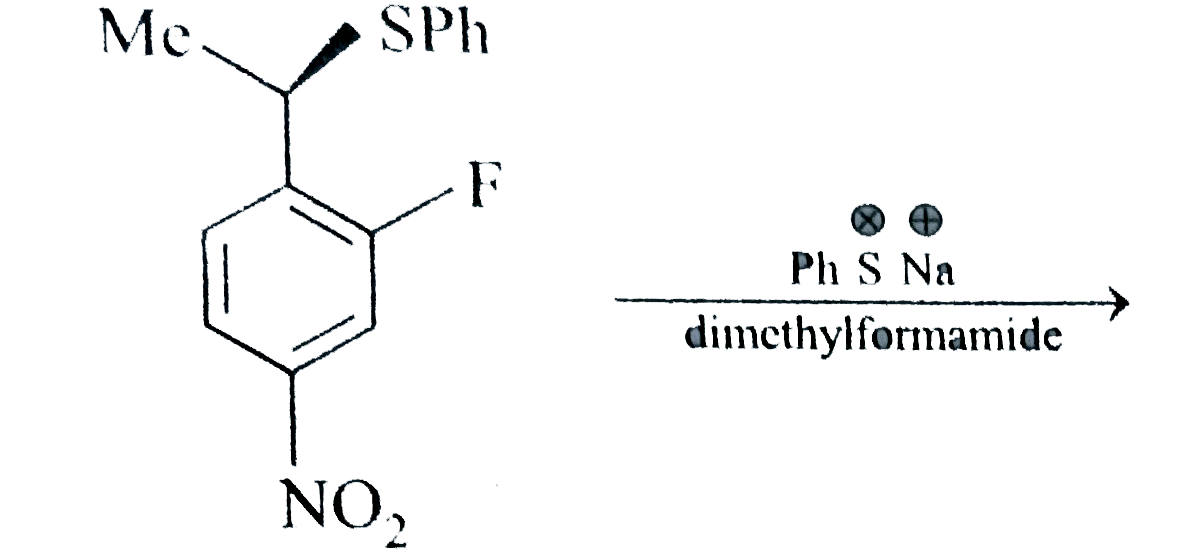Complete Solutions to Physical Properties And Nuleophilic Substitution Reaction of chapter ORGANIC COMPOUNDS CONTAINING HALOGENS of Class 12 book with complete answers and questions
| Class 12 | CHEMISTRY |
| Chapter | ORGANIC COMPOUNDS CONTAINING HALOGENS |
| A2Z | Physical Properties And Nuleophilic Substitution Reaction |
| Number Of Questions | 34 |
| Academic Year | 2023-24 |
For `CH_(3)Br+OHrarrCH_(3)OH+Br`
the rate of reaction is given by the expression .
View SolutionWhat would be the produt when neopentyl chloride reacts with sodium ethoxide
View SolutionThe rate law for the reaction
`RCl + NaOH(aq) rarr ROH + NaCl` is given by
Rate `= k[RCl]`. The rate of the reaction will be
View Solution`S_(N)1` reaction is favoured by
View SolutionWhen ethyl bromide is treated with moist `Ag_(2)O` main product is//are.
View SolutionTreatment of ammonia with excess of ethyl chloride will yield
View SolutionThe reactivity of ethyl chloride is
View SolutionThe reactivities of methy chloride propyl chloride and chlorobenzene are in the order
View SolutionReaction of `t-butyl` bromide with sodium methoxide produces
View Solution`C_(6)H_(5)-CH_(2)-CI+KCN(aq)rarrC_(6)H_(5)-CH(2)-C=N+KCI`
Compounds `X` and `Y` are .
View SolutionEthylidence chloride on treatment with aqueous `KOH` gives .
View Solution`C_(2)H_(5)CI+KCNrarrX overset("Hydrolysis") rarr Y. X' and Y` are
View SolutionThe set of compounds in which the reactivity of halogen atom in the ascending order is .
View SolutionViny chloride reacts with `HCI` to from
View SolutionWhen ethyl iodide is heated with silver nitrate the product obtained is
View SolutionFor a given alkyl group the densities of the halides follow the order
View Solution
Identify the major product
View SolutionHEATING ALKYL HALIDES WITH DRY SILVER OXIDE
View SolutionAlkyl halide can be converted into alkene by
View SolutionAmong the following, the molecule with the highest dipole moment is :
View SolutionThe increasing order of reactivity of the following isomeric halides with `Ag NO_(3) (H_(2)O+alcohol)` is
(I) `C_(6) H_(5) -CH=CH - CH_(2) -CH_(2) -CI`
(II) `C_(6) H_(5) -CH =CH-underset(Cl)underset(|)(C)H-CH_(3)`
(III) `C_(6) H_(5) - underset(CI)underset(|)C =CH-CH_(2) -CH_(3)`
(IV) `C_6H_5-underset(Cl)underset(|)overset(C_6H_5)overset(|)C-CH=CH_2`
View SolutionConsider the following reactions which are carried out at the same temperature
`CH_(3) -Br + OH^Theta overset(EtOH)rarr CH_(3) -OH + BrQ ...(i)`
` CH_(3) Br + OH^Theta overset(DMSO)rarr CH_(3) -OH + BrQ ...(ii)`
Which of the following statement is correct about these reactions
View SolutionWhich of the follwing is the example of `S_(N)2` reaction .
View SolutionTeriary alkyl halides are practically inert to ` S_(N)2` mechanism because of .
View SolutionThe structure of the major product formed in the following reaction
 .
.
View SolutionA solution of (-l)- chloro -1 phenyletane in toluene recemises slowly in the presence of a small amunt of `SbCI_(5)` due to the formation of .
View SolutionThe order of reactivities of the following alky halides for an `S_(N)2` reaction is .
View SolutionThe following compound on hydrolysis in equeous acetone will give .

View SolutionThe major product of the following reaction is
 .
.
View SolutionKI in acetone, undergoes `S_(N)2` reaction with each of `P,Q ,R` and S The rates of the reaction very as
`underset(P)(H_(3)C-Cl)` .
.
View Solution`CH_(3) -underset(C_(3)H_(7)(n))underset(|)overset(C_(2)H_(5))overset(|)C-CI overset(NaOH(ag))rarr CH_(3) -underset(C_(3)H_(7)(n))underset(|)overset(C_(2)H_(5))overset(|)C-CI` .
The product obtained will be .
View SolutionWhat is the product of the following `S_(N)2` reaction ?
 .
.
View SolutionWhich is the correct reaction coordinate diagram for the following solvolysis reaction ?.
 .
.
View SolutionRate limiting `S_(N)1` followingthe sequence The statement about sequence on the basis of assumption that`R` contains `3` different groups is
 .
.
View Solution
Physical Properties And Nuleophilic Substitution Reaction questions and complete solutions for chapter ORGANIC COMPOUNDS CONTAINING HALOGENS of A2Z CHEMISTRY (HINGLISH) of Class 12
All Exercises from A2Z Class 12 CHEMISTRY ORGANIC COMPOUNDS CONTAINING HALOGENS
- AIIMS Questions
- AIPMT/NEET Questions
- Assertion-Reasoning Questions
- Chemical Properties Of Haloarenes
- Elimination Reaction And Polyhalogen Compounds
- Methods Of Preparationof Haloalkanes
- Methods Of Preparationof Haloarenes
- Physical Properties And Nuleophilic Substitution Reaction
- Section B - Assertion Reasoning
- Section D - Chapter End Test